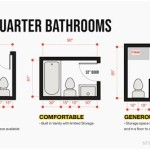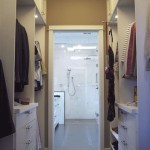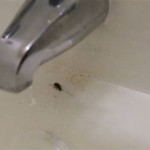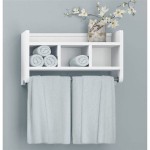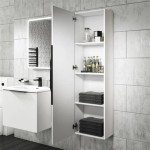Drain Pipes For Bathroom Sink
The drain pipe is an essential part of your bathroom sink. It allows water to flow out of the sink and into the main drain line. Without a drain pipe, your sink would quickly become clogged and unusable. There are a few different types of drain pipes available, so it's important to choose the right one for your needs.
The most common type of drain pipe is the P-trap. A P-trap is a curved pipe that forms a trap that prevents sewer gases from entering your home. P-traps are available in a variety of sizes and materials, so you can find one that will fit your sink and your budget.
Another type of drain pipe is the S-trap. S-traps are similar to P-traps, but they are not as effective at preventing sewer gases from entering your home. S-traps are less common than P-traps, but they are still available at most hardware stores.
If you have a garbage disposal, you will need to use a drain pipe that is specifically designed for garbage disposals. These drain pipes have a larger diameter than standard drain pipes, and they are designed to handle the high volume of water and food waste that is produced by a garbage disposal.
Once you have chosen the right drain pipe for your needs, you will need to install it. Installing a drain pipe is a relatively simple process, but it is important to follow the manufacturer's instructions carefully. If you are not comfortable installing the drain pipe yourself, you can hire a plumber to do it for you.
Here are a few tips for installing a drain pipe:
- Make sure that the drain pipe is the right size for your sink.
- Use a sealant to create a watertight seal between the drain pipe and the sink.
- Tighten the nuts on the drain pipe securely, but do not overtighten them.
- Test the drain pipe by running water through the sink.
By following these tips, you can ensure that your drain pipe is installed correctly and will provide years of trouble-free service.
Troubleshooting Drain Pipe Problems
If you are experiencing problems with your drain pipe, there are a few things that you can do to troubleshoot the issue.
- Check for clogs. The most common cause of drain pipe problems is clogs. Clogs can be caused by a variety of things, such as hair, soap scum, and food waste. To check for clogs, remove the drain cover and use a drain snake to clear the clog.
- Inspect the drain pipe for leaks. If you see water leaking from the drain pipe, it is likely that there is a leak. Leaks can be caused by a variety of things, such as loose nuts or damaged seals. To fix a leak, tighten the nuts or replace the seals.
- Call a plumber. If you are unable to troubleshoot the problem yourself, you should call a plumber. A plumber can diagnose the problem and make the necessary repairs.
By following these tips, you can troubleshoot and fix most drain pipe problems.

How To Install Bathroom Sink Drain

How To Connect A Bathroom Sink Drain

Bathroom Sink Plumbing Installation

How To Plumb A Drain Sink Pipes

How To Install P Trap And Bathroom Sink Drain Piping Easy Installation For Beginners

How To Easily Connect The Plumbing For A New Bathroom Sink Hometips

How To Replace A Bathroom Sink Drain

1set Expandable Flexible Bathroom Sink Drain Pipe Anti Odor And Insect Proof Basin Drainage Wall Mounted Space Saving Stainless Steel Flip Cover
Can You Use The Same Drain Pipe For Both A Kitchen Sink And Bathroom If So How Would That Be Done Quora

Bathroom Sink Plumbing Installation Diy Montreal
